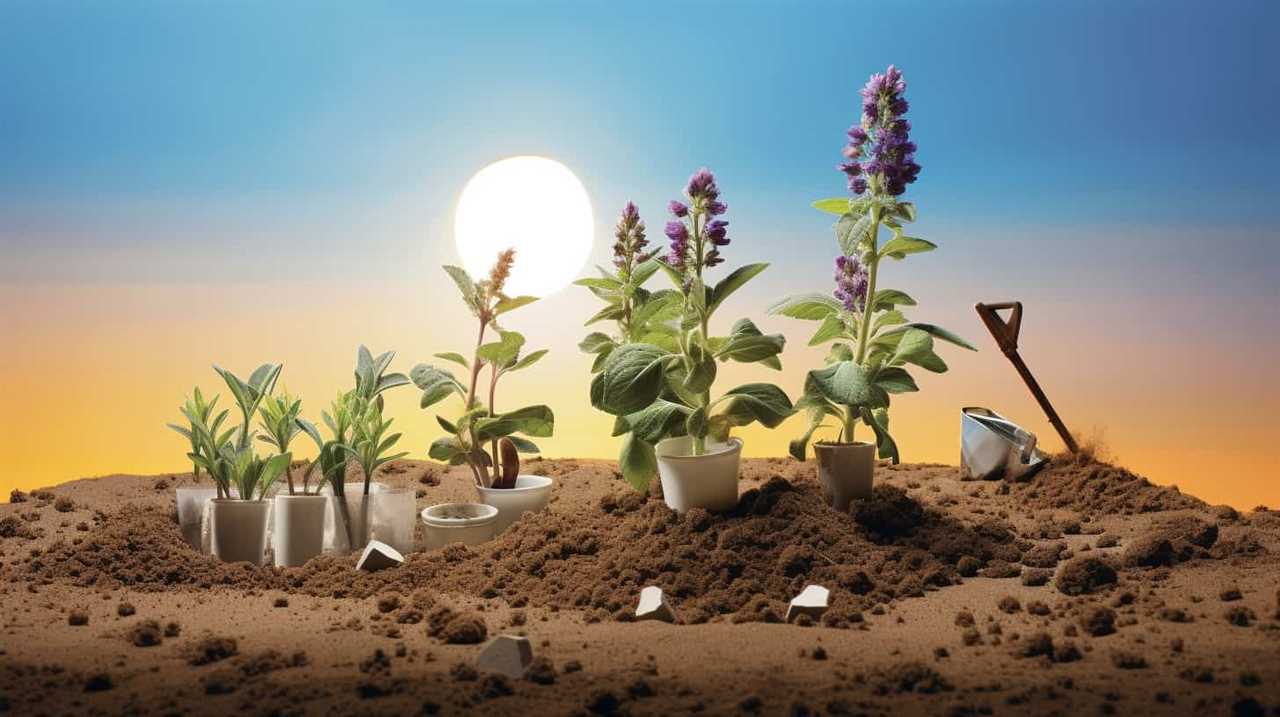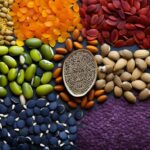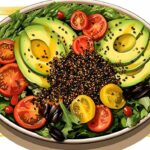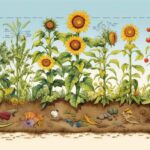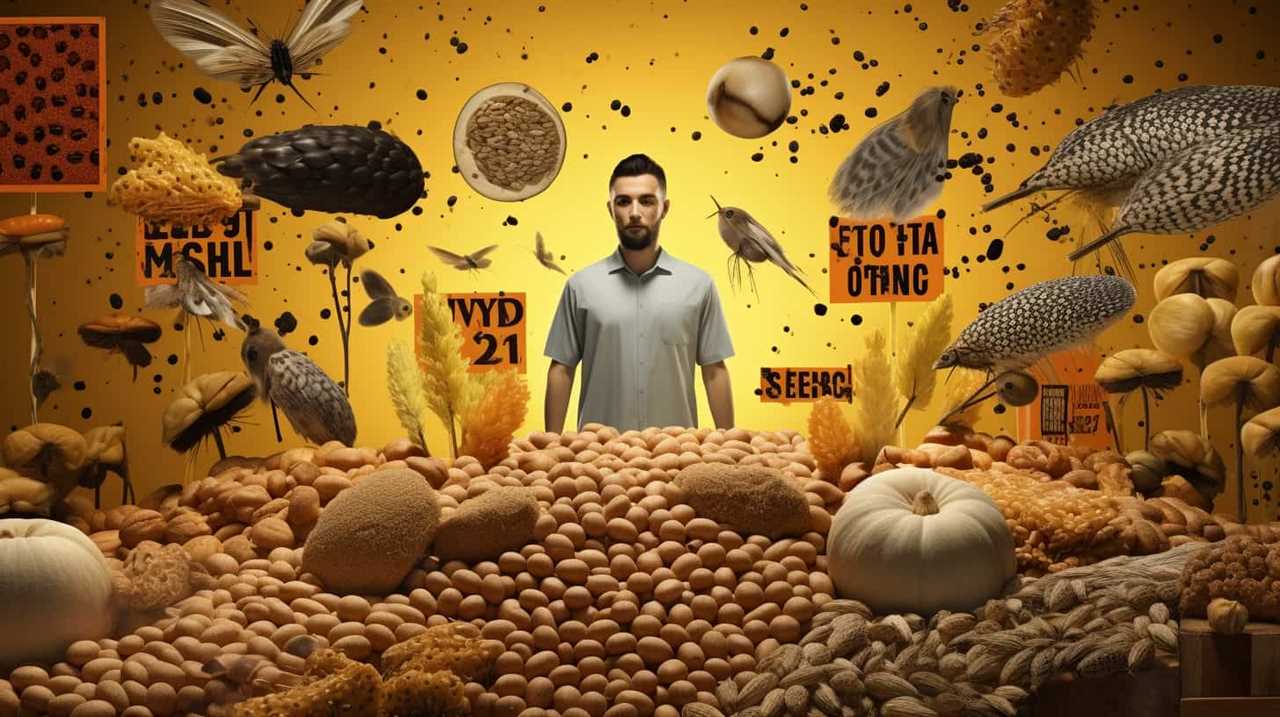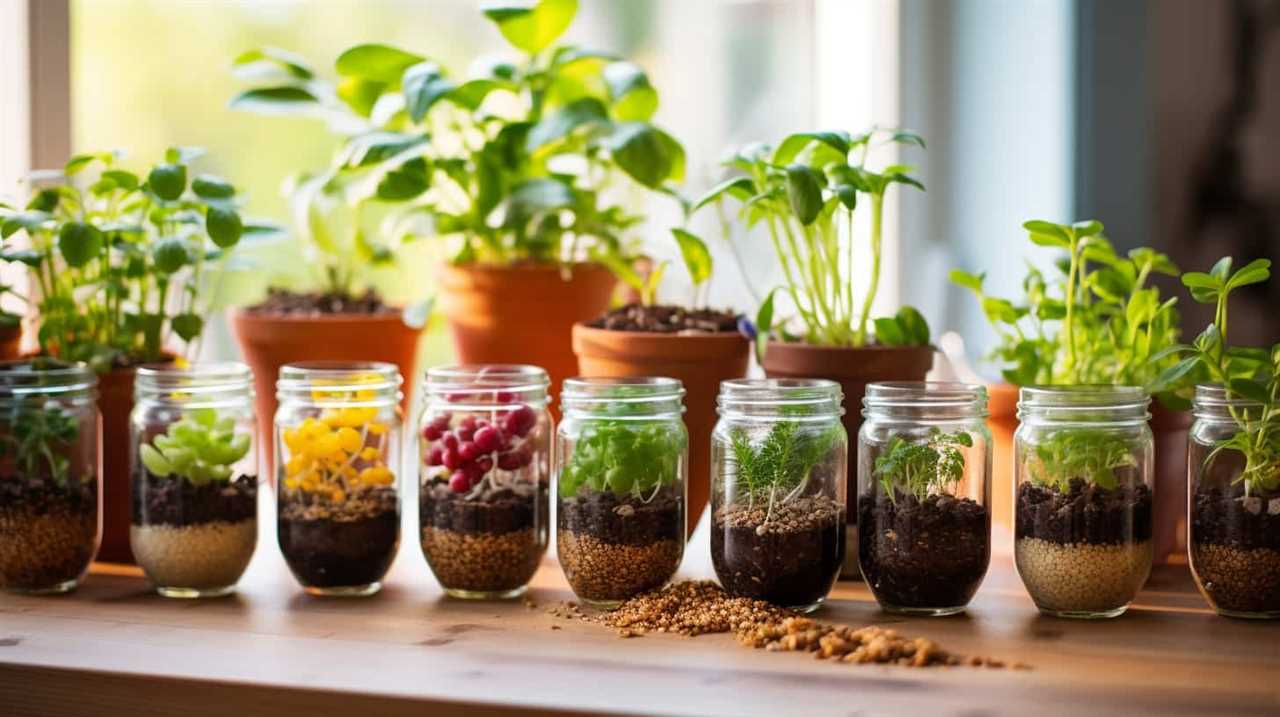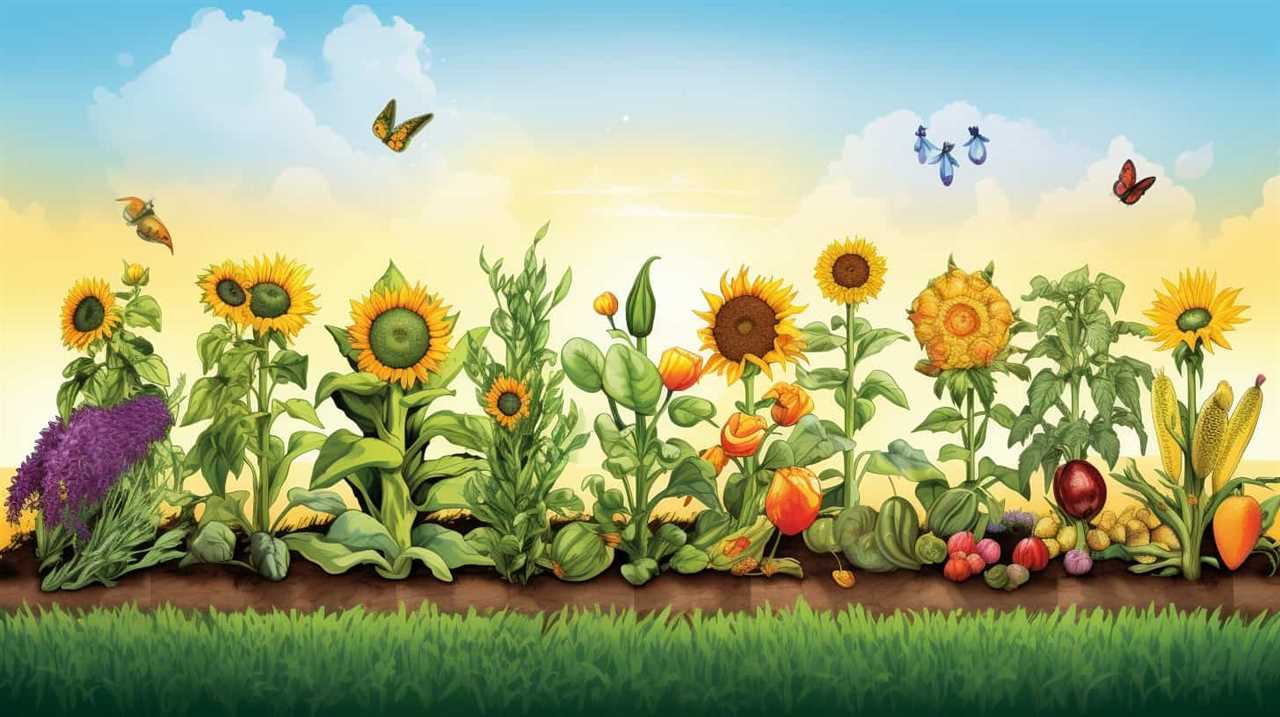We have uncovered the plan to maximize the advantages of superfood seeds in the business industry. In this article, we will reveal the essential methods for effectively growing these nutrient-rich powerhouses.
From understanding the specific climate requirements to implementing effective pest control strategies, we’ve got you covered.
Get ready to elevate your farming game and embrace the liberation that comes with producing high-quality, in-demand superfood seeds.
It’s time to revolutionize the industry together. Let’s dive in.
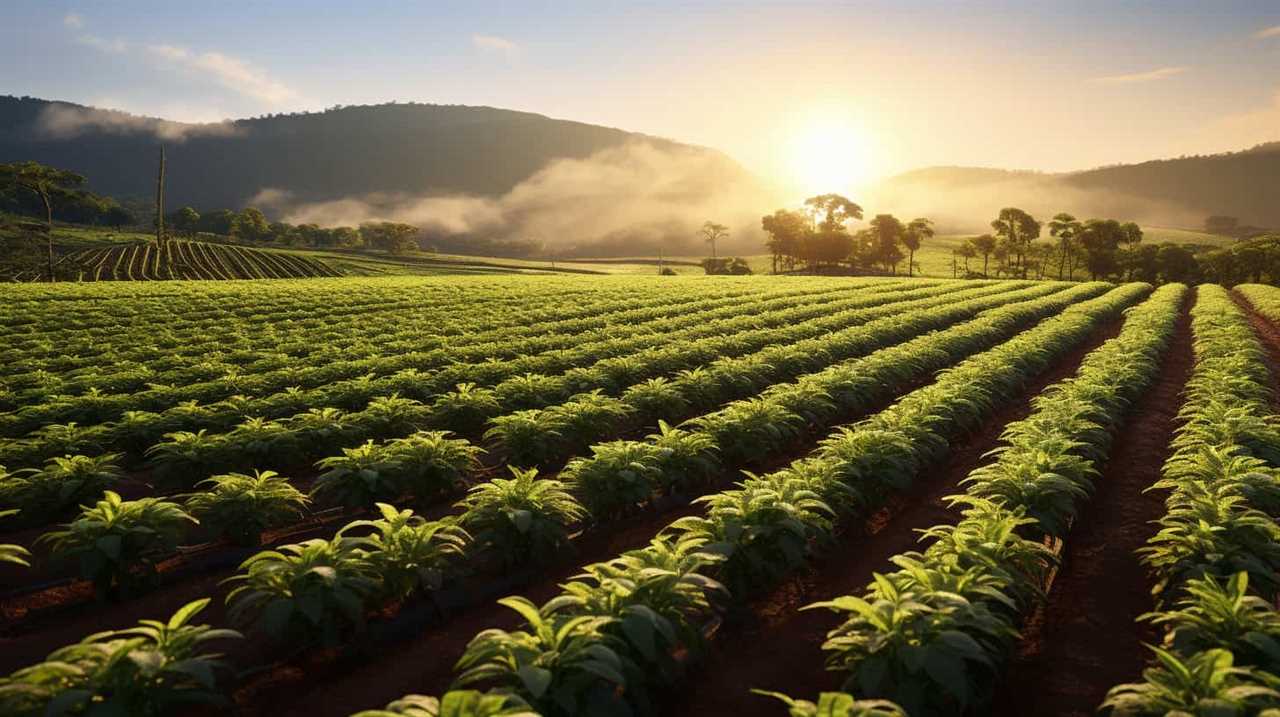
Key Takeaways
- Chia plants require a Mediterranean climate with a minimum of 120 frost-free days and temperatures between 70-80°F (21-27°C).
- Well-drained soil with a pH range of 6-8, preferably slightly acidic to neutral, is ideal for chia cultivation.
- Efficient irrigation techniques, such as drip irrigation and rainwater harvesting, are crucial for providing necessary moisture to chia plants while conserving water resources.
- Sustainable farming practices, including crop rotation, integrated pest management, and organic farming, can promote long-term soil health, reduce reliance on synthetic chemicals, and improve the market value of chia crops.
Climate Requirements for Chia Cultivation
To successfully cultivate chia for commercial purposes, it’s essential to understand the climate requirements that are necessary for optimal growth. Chia seeds are known for their numerous health benefits, making them a popular choice in the health food industry. In recent years, the chia seed market has seen significant growth due to the increasing demand for nutritious and sustainable superfoods.
Chia plants thrive in regions with a Mediterranean climate, characterized by mild winters and hot, dry summers. They require a minimum of 120 frost-free days and prefer temperatures between 70-80°F (21-27°C) during the growing season. Additionally, chia plants prefer well-drained soil with a pH range of 6-8.
Understanding these climate requirements is crucial for successful chia cultivation on a commercial scale. By providing the ideal conditions, farmers can ensure optimal growth and yield of chia seeds, meeting the rising demand in the market.
Soil Conditions for Successful Chia Growth
Now, let’s delve into the critical aspect of soil conditions that are necessary for successful chia growth.

When it comes to organic chia farming and ensuring optimal chia seed germination, the quality of the soil can’t be overlooked. Here are four key factors to consider:
- Well-drained soil: Chia plants thrive in soil that allows excess water to drain away. Poorly drained soil can lead to root rot and stunted growth.
- pH level: Chia prefers slightly acidic to neutral soil with a pH range of 6.0 to 7.5. Testing the soil and adjusting the pH if necessary is crucial for healthy plant development.
- Organic matter: Adding organic matter, such as compost or well-rotted manure, improves soil fertility, moisture retention, and overall plant health.
- Soil texture: Chia prefers sandy loam or loamy soil that provides good drainage while retaining enough moisture for the seeds to germinate.
Water and Irrigation Considerations for Chia Farming
We need to carefully consider our water and irrigation strategies for successful chia farming. Water is a crucial element in chia cultivation, and efficient irrigation techniques can optimize plant growth while conserving water resources.
One effective method is drip irrigation, where water is delivered directly to the plant roots, minimizing evaporation and runoff. This technique not only ensures that the chia plants receive the necessary moisture, but it also reduces water wastage.
Another consideration is rainwater harvesting, which involves collecting and storing rainwater for irrigation purposes. This sustainable approach can supplement the water supply and reduce reliance on conventional sources.
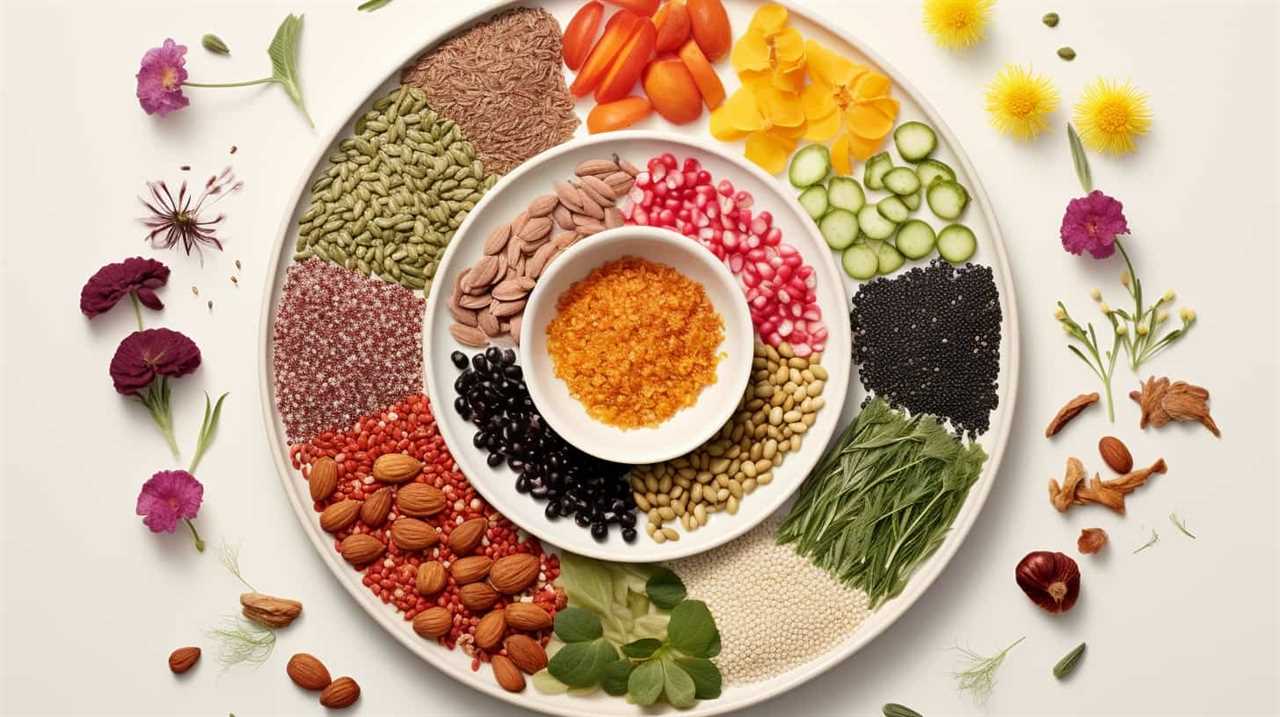
Nutrient Management in Commercial Chia Production
Implementing effective nutrient management practices is essential for maximizing the commercial growth of chia seeds. To ensure optimal nutrient levels in the soil, farmers can employ the following crop rotation techniques:
- Legume rotation: Growing legumes, such as beans or peas, before planting chia helps fix nitrogen in the soil, providing a natural source of nutrients.
- Cover crops: Planting cover crops, like clover or rye, during fallow periods helps prevent soil erosion and adds organic matter, improving nutrient retention.
- Balanced fertilization: Applying a balanced fertilizer, tailored to the specific nutrient requirements of chia, helps maintain soil fertility and supports healthy plant growth.
- Soil testing: Regularly testing the soil for nutrient deficiencies allows farmers to adjust fertilizer applications accordingly, ensuring chia plants have access to the necessary nutrients.
Furthermore, implementing proper post-harvest handling techniques, such as timely drying and storage, helps preserve the nutrient content of chia seeds. This ensures that the seeds maintain their nutritional value and quality, further enhancing their marketability.
Transitioning into the subsequent section about ‘pest and disease control strategies for chia crops’, it’s equally important to protect the crop from potential threats that could hinder its growth and production.
Pest and Disease Control Strategies for Chia Crops
To effectively protect chia crops from pests and diseases, it’s crucial to implement proactive control strategies. Integrated pest management (IPM) is an effective approach that combines different pest control methods to minimize the use of chemical pesticides and promote sustainable farming practices.
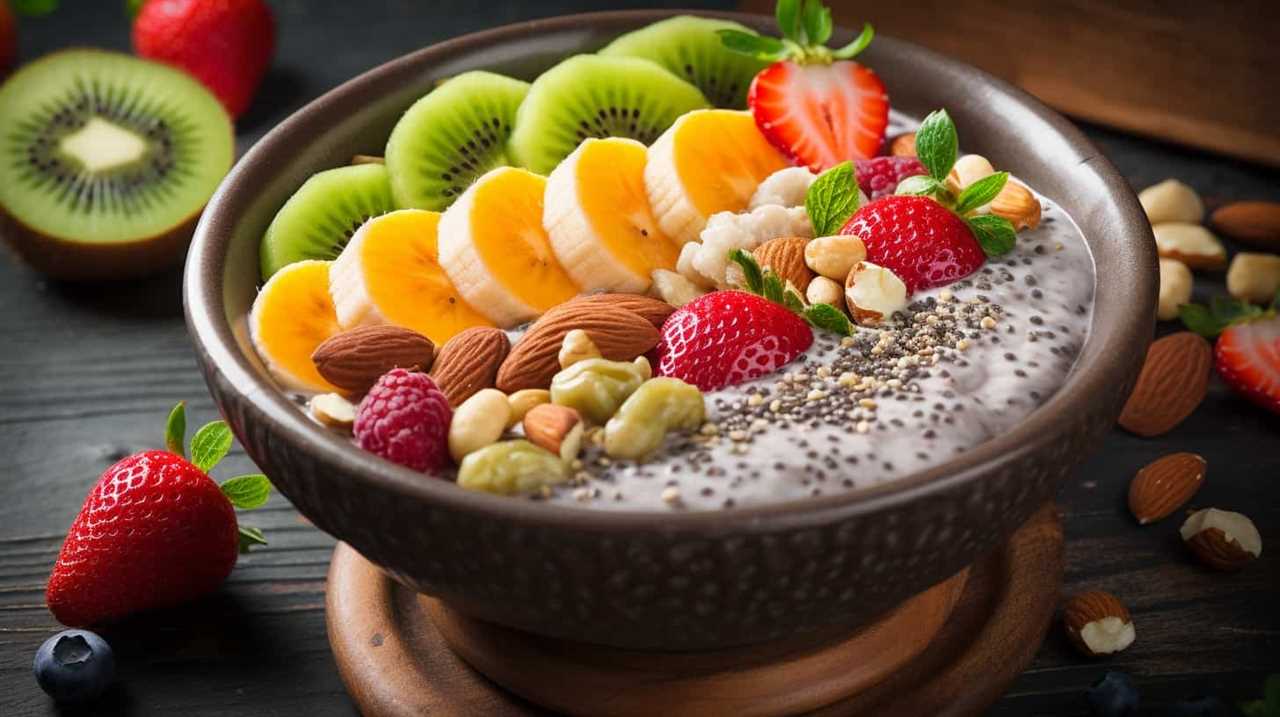
IPM involves monitoring the crop regularly to detect early signs of pest infestations and diseases. By using organic farming methods, such as crop rotation, companion planting, and biological control, farmers can reduce the reliance on synthetic chemicals and maintain a healthy ecosystem.
For example, planting marigolds or basil near chia crops can deter pests like aphids and whiteflies. Additionally, introducing beneficial insects like ladybugs and lacewings can help control pest populations naturally.
Conclusion
In the rich soil of our commercial chia farms, we’ve unlocked the secrets of growth and nourishment. Like seeds bursting forth from the earth, our chia crops thrive under the careful guidance of climate considerations, soil conditions, irrigation techniques, and nutrient management.
We ward off pests and diseases, protecting our precious harvest. As we master the art of cultivating these superfood seeds, we sow the seeds of a healthier future for all.
